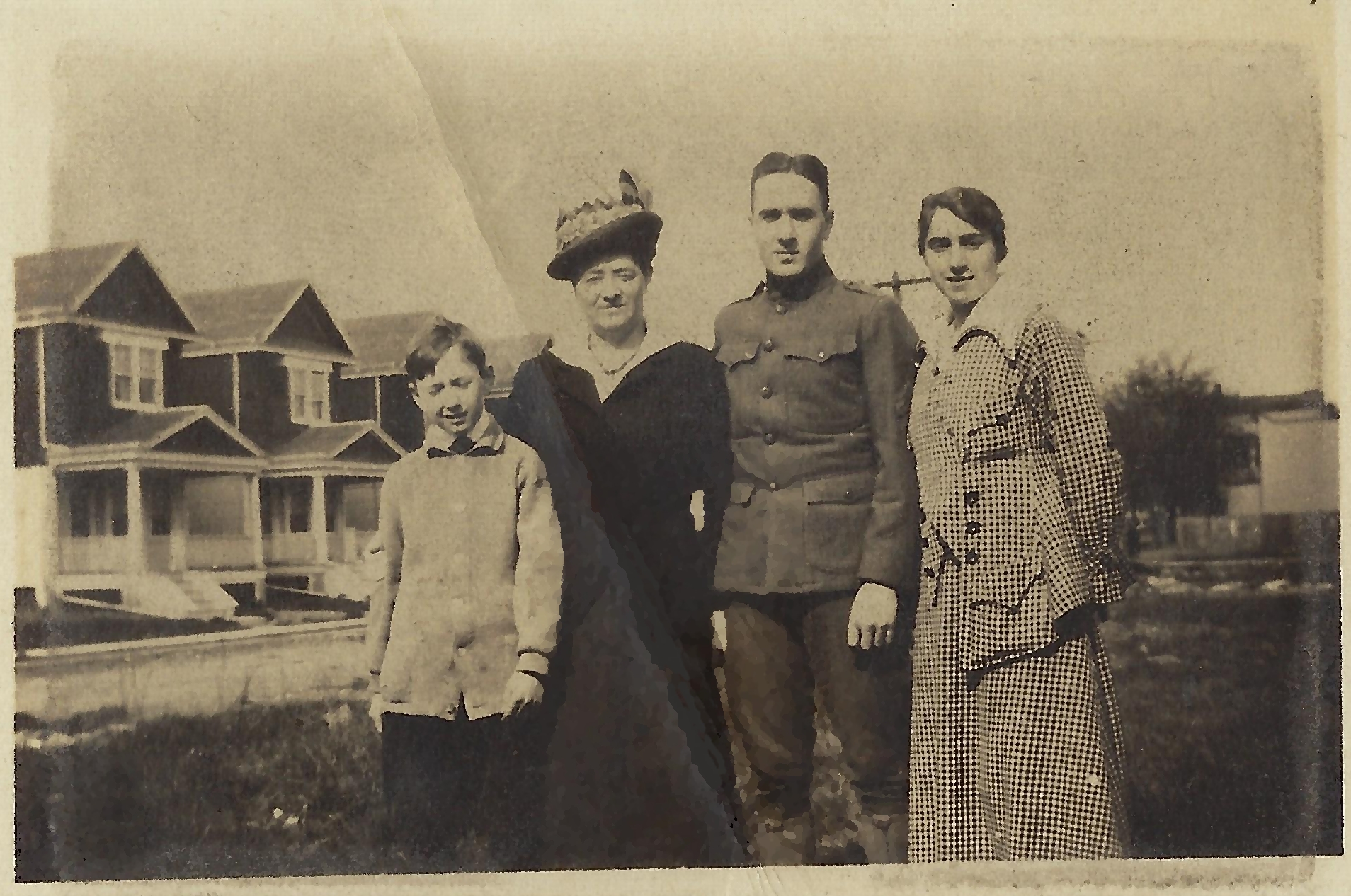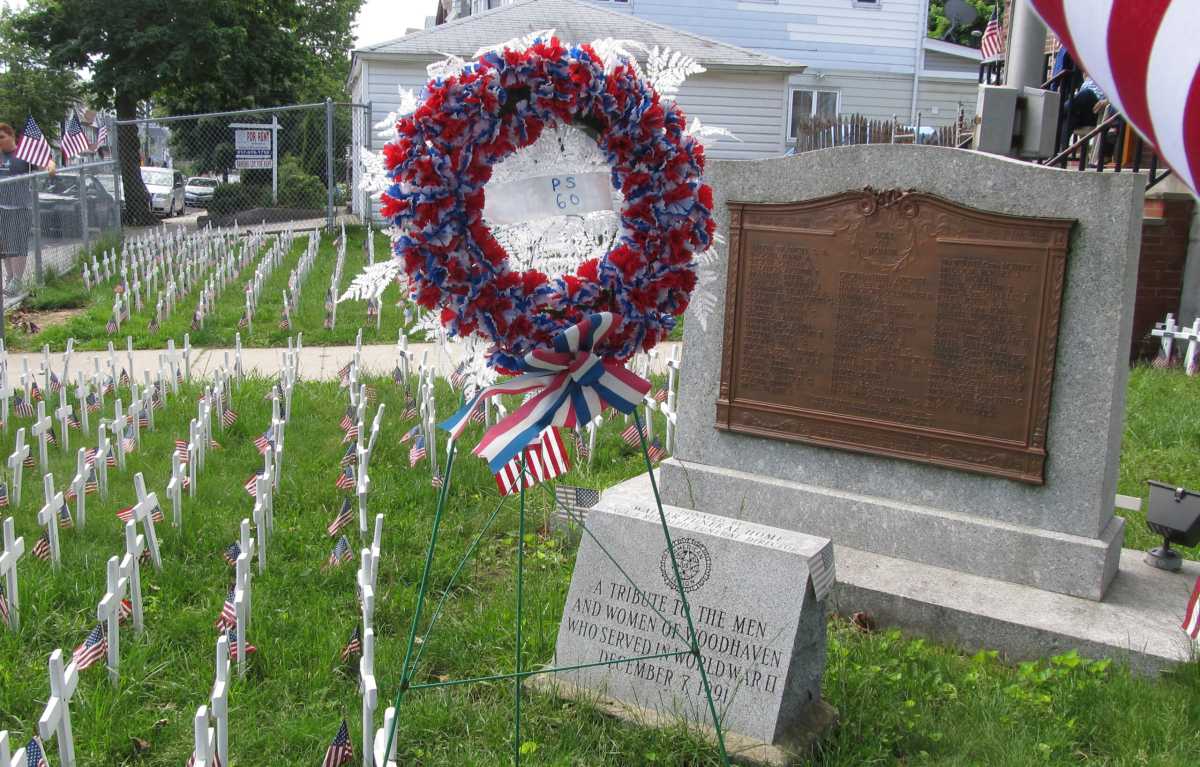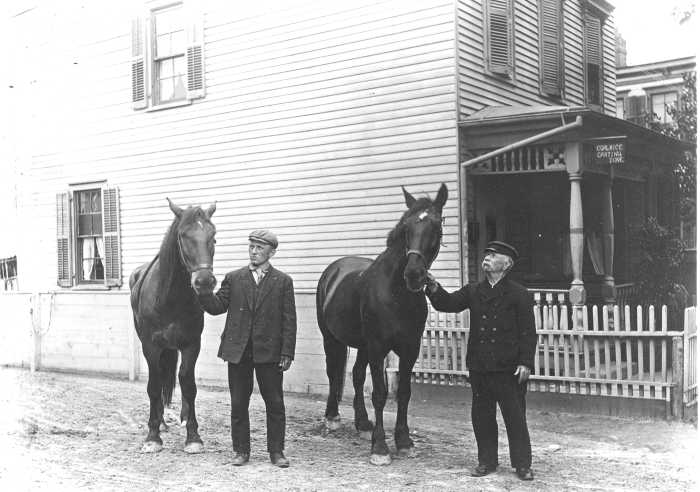Five hundred and eighty-five days. That’s how long the United States was embroiled in The Great War, or as it is known today, World War 1. Although it officially began on Aug. 1, 1914 it wasn’t until nearly three years later, on April 6, 1917, that the United States joined by declaring war on Germany.
During those first few years, while the war raged overseas, Woodhaven was still a neighborhood in development, not too far removed from the mostly rural farming town it was in its infancy. The elevated train had just been built on Jamaica Avenue, silent movies were the norm, as were wooden school houses and Woodhaven ‘Avenue’ was still just a sleepy single-lane dirt road.
Public opinion was originally against joining the war, but that began to change with the sinking of the RMS Lusitania in May 1915. Locally, residents of Woodhaven were horrified by a first-hand account of the sinking by Tom Adamson of Leggett Avenue (now 80th Street), who barely survived the sinking.
“We were just eating lunch when we heard the first shot,” he wrote home. “We knew they had got us. The Lusitania immediately listed to starboard; it was almost impossible to get up the companionway. When we got to the boat deck, the forward part of the ship was completely under water.”
Adamson’s legs were crushed after he plunged into the ocean and he was sucked underwater. He had given up any hope for survival when he miraculously grabbed onto a rope and pulled himself to the surface. There he described a horrific scene of an overturned boat which he had just helped fill with women and children moments before. All of them drowned.
Though the United States joined the war in April of 1917, it wasn’t until later in the year that we saw our local boys go off to war with rousing support from an enthusiastic press and public (“41 More Sons of Woodhaven Gayly Go To War” was an actual headline in November 1917).

But by May of the following year the war began to take its toll on the locals. At first there were a few isolated casualties. But as the weeks wore on, readers of the local papers would nervously look at each week’s headlines to see the latest news and grim announcements that more local boys had been killed.
The first recorded death from Woodhaven was Chief Boatswain’s Mate Frederick Zahn of Rector Avenue (now 77th Street). Zahn never made it overseas, dying instead in Fort Lyons, Colorado of “disease.” Ironically, though he was the first reported casualty, he is last (alphabetically) on the monument that sits outside American Legion Post 118 today.
One of the soldiers sent overseas was Cpl. Alfred Cocquelet of Willard Avenue (now 96th Street). One month after being sent overseas, his Infantry (the 325th) was selected by King George of England to be reviewed in a military parade. His Infantry was hosted at Buckingham Palace by Princess Mary.
A few months afterwards, Cocquelet was killed in action in the Weuse-Argonne offensive.
One of the more famed casualties was Arthur Engels, who lived on Jamaica Avenue and was well-known around the neighborhood for his early morning long distance runs. He made headlines as a 17-year-old, smashing world hurdling records at races in Madison Square Garden. He earned the nickname “King of the Eastern Hurdlers.”
Engels lived at 4088 Jamaica Ave., right off Woodhaven Boulevard, above what would later be well-known around Woodhaven as Carlo’s Pizza. Less than one year after racing at the Garden, Engels was badly wounded in action, developing gangrene in his right leg. Doctors amputated his leg in an attempt to save his life, but he died shortly afterwards.
There were many such stories coming back from overseas, not only to Woodhaven families but to all communities around the United States. By the time peace was declared 105 years ago, on Nov. 11, 1918, seventy young men from Woodhaven had lost their lives.
In next month’s Old Timer, we will look at how residents of Woodhaven have remembered those that lost their lives in this and some of the other conflicts that happen all too often in our world.




































